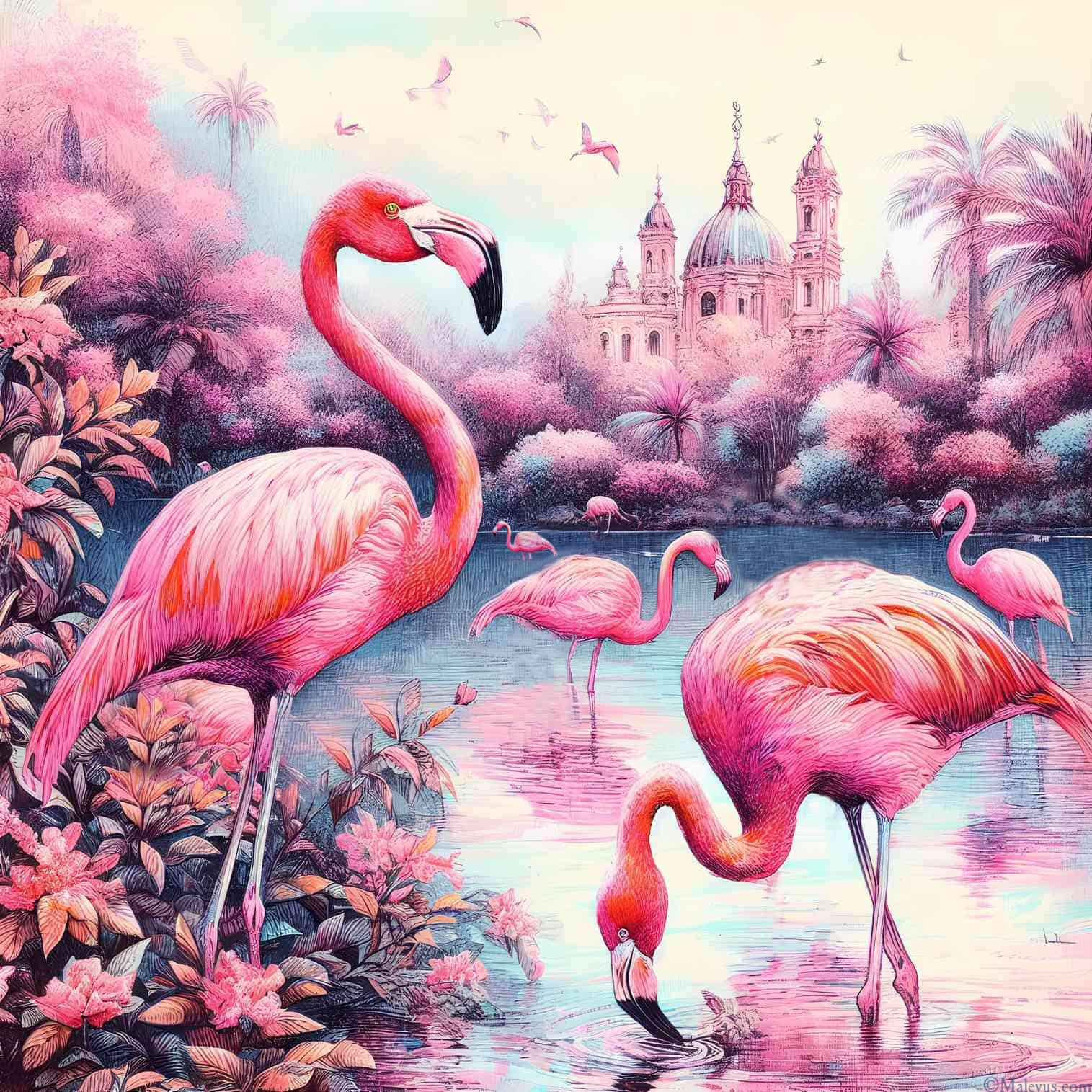Flamingos are birds belonging to the genus Phoenicopterus, of which three living species are known: Phoenicopterus chilensis (Chilean flamingo), Phoenicopterus roseus (greater flamingo), and Phoenicopterus ruber (American flamingo). Despite being different species, all adult members of these species share a common feature: they are all pink in color.
These large and uniquely shaped birds are capable of covering long distances during their migration period. They inhabit wetland areas where they feed and raise their chicks, with each pair of flamingos typically having one chick. At birth, the chicks are whitish-gray with some black areas on their bodies, but as they reach adulthood, they acquire the distinctive pink color.
Why Are Flamingos Pink?
Flamingos are aquatic birds that feed on a shrimp called Artemia salina, which contains photosynthetic pigments such as carotenoids, giving flamingos their characteristic pink color. Flamingos can also consume pink unicellular algae that also contain carotenoids. Flamingos living in captivity can lose their color and adopt a less flattering gray hue, suggesting that the bird is unable to produce the pigment itself and therefore obtains it from its diet.
When flamingos ingest it, the pigments are metabolized during digestion, binding to fat molecules that travel to the skin and, from there, to the feathers during molting. This is how the most prominent characteristic of flamingos, their pink color, is achieved. Flamingo chicks only acquire this color when they molt into their adult plumage.
It is also known that male flamingos, during the breeding and mating seasons, extract a highly pronounced pink oil from their uropygial gland, located at the base of their tails. They apply this oil to their feathers to enhance their attractiveness and courtship display for females.
Carotenoids not only provide flamingos with their pink coloration but also have antioxidant properties and other health benefits. They are essential for maintaining the flamingos’ overall well-being. Flamingos that don’t consume enough carotenoids in their diet may experience paler plumage and potentially health issues. Carotenoids play a role in their immune system and overall health.
Bird Colors
The coloration of birds results from the accumulation of pigments in their integumentary structures (skin or feathers). Not all birds produce the pigments or colors that represent them; many of these colors come from their diet. Birds can create melanin, resulting in black or brown colors in various shades. The absence of pigment leads to white, while other colors like yellow, orange, red, or green are acquired through their diet.
There is one group of birds, belonging to the Musophagidae family, capable of synthesizing true pigments in addition to melanin. These pigments include Uroporphyrinogen III, which imparts a violet color, and turacoverdin, a unique green pigment in birds.
Bird plumage serves various functions, including camouflage, courtship, and territory establishment. The feathers of a bird can provide valuable information about the individual, such as its health, sex, lifestyle, and the vital period it is in.
Typically, birds molt at least once a year, and this process is not random.
Each region of the body sheds its feathers at a specific time. There are specific types of molts that occur just before the breeding or mating season of each species, resulting in a different plumage from the rest of the year.
This pre-mating plumage is usually more vivid and flashy, as its purpose is to attract a member of the opposite sex.
Genetic and hormonal factors influence the color and shape of feathers. Before a feather emerges from a skin follicle, epidermal cells produce and organize the protein keratin, which makes up the majority of feathers. Variations in keratin structure produce optical effects that, combined with different pigment distributions, create the various color patterns seen in birds.
What Do Flamingos Eat?
Flamingos are filter-feeding birds. To feed, they submerge their heads in the water and tuck them between their legs. Using their legs and beaks, they stir up the sandy bottom, causing organic matter to enter their beaks. They then squeeze their beaks and press with their tongues to expel the water while retaining the captured food with comb-like structures on the edge of their beaks.
The diet of flamingos is diverse and non-selective due to their feeding method.
When filter-feeding, flamingos can consume small aquatic organisms like insects, crustaceans, mollusks, worms, algae, and protozoa.


